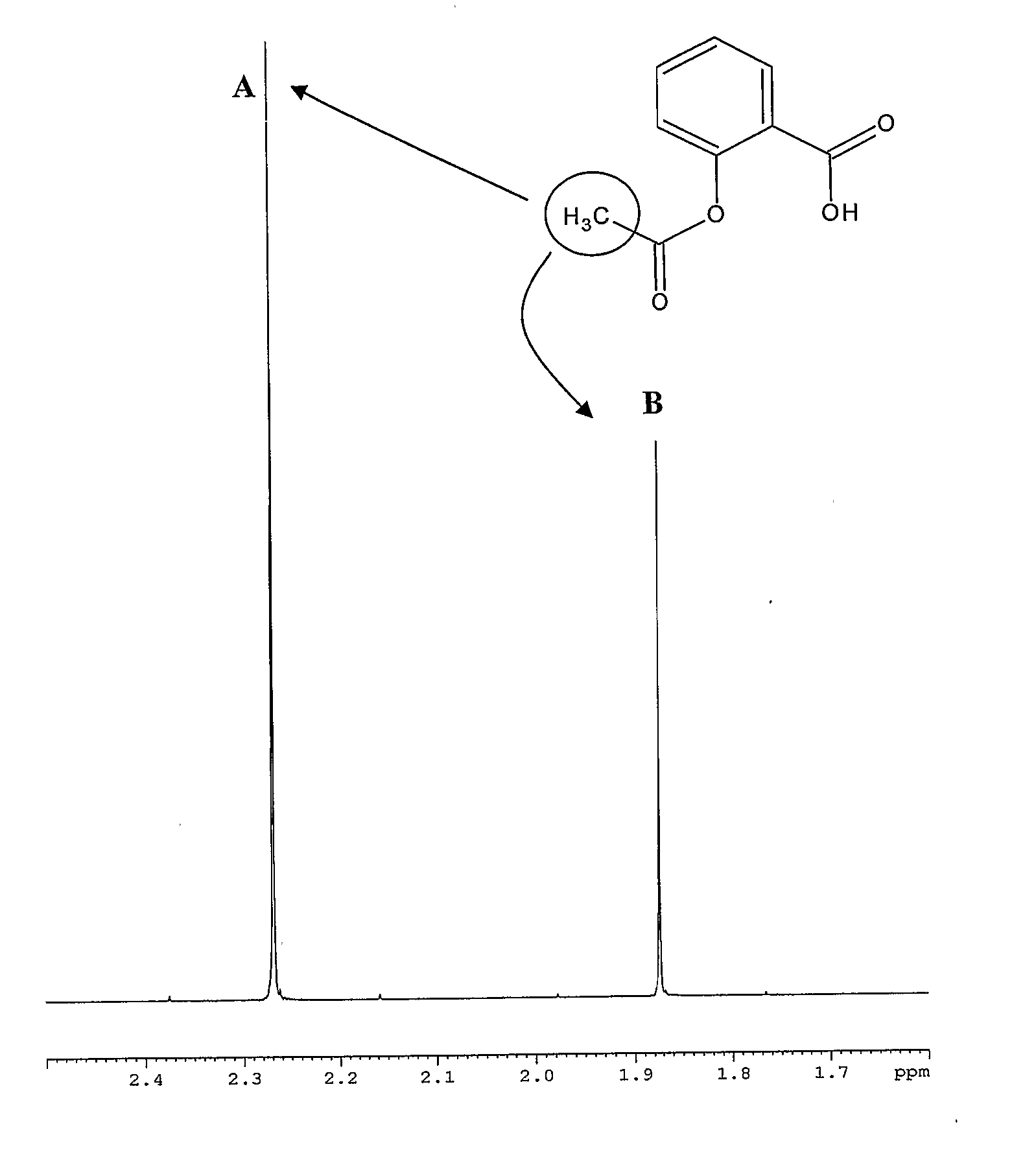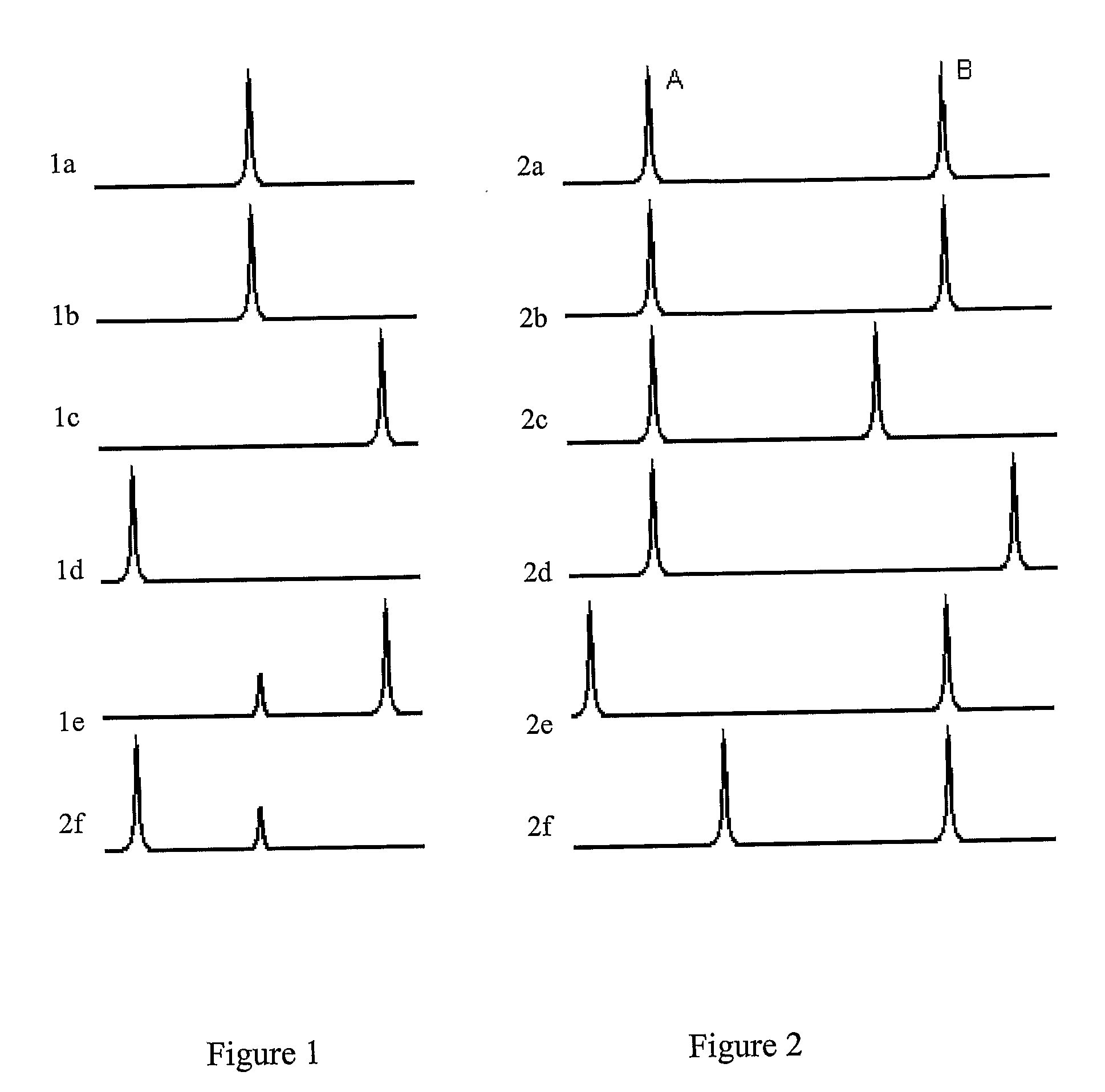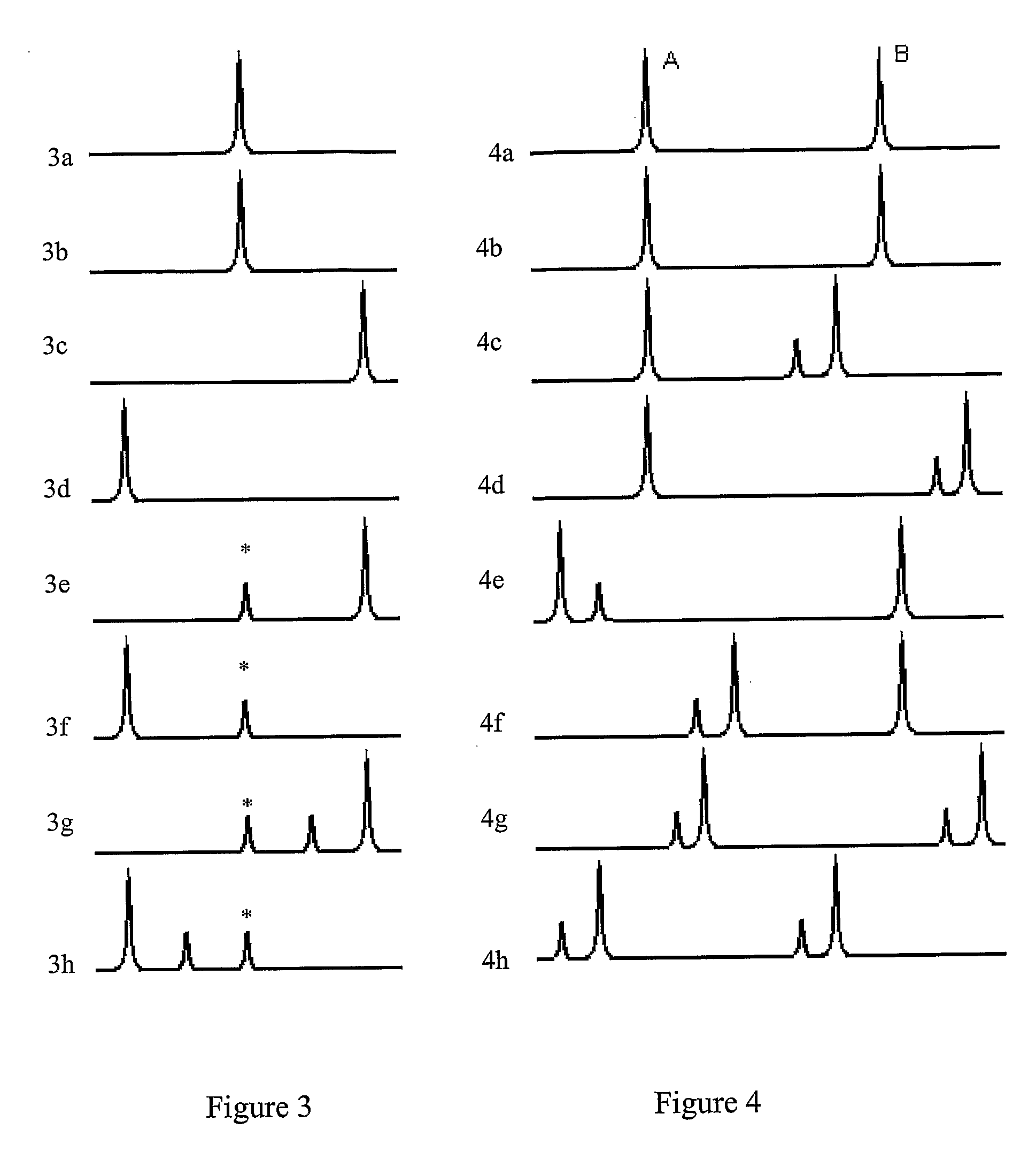Method for the In Vitro Determination of Cellular Uptake of Exogenous and Endogenous Substances Using Nmr Shift Agents and the Magic Angle Nmr Technique
a technology of cellular uptake and shift agent, which is applied in the field of in vitro quantitative determination of the cellular uptake of exogenous or endogenous substances using nmr shift agent and magic angle nmr technique, can solve the problems of inability to meet all the requirements of the current art, the treatment may be particularly drastic and invasive, and the worst situation can occur, so as to achieve optimal detection of lis and better differentiation between signals
- Summary
- Abstract
- Description
- Claims
- Application Information
AI Technical Summary
Benefits of technology
Problems solved by technology
Method used
Image
Examples
example 2
[0205] Determination of Cellular Uptake of Acetylsalicylic Acid in Red Blood Cells
[0206] In this example, EXO=Acetylsalicylic acid; SA=Dy-BOPTA (Dy is the symbol of Dysprosium, one of the lanthanides known as shift agent).
[0207] The nucleus used to determine Acetylsalicylic acid cellular uptake is the proton.
[0208] The in vitro determination has been preformed on HRBC obtained by human blood treated as described below.
[0209] Centrifugation: the employed centrifuge was HERAEUS SEPATECH OMNIFUGE 2 ORS, rotor model 3360. Centrifugation was done at 2109 g (equivalent to 3500 rpm) at 4° C. for 15 minutes.
[0210] Living HRBC preparation: human blood (to which sodium citrate has been added as an anticoagulant) was centrifuged. After that, HRBC pellets were separated from serum and white cell interface, carefully obtaining a solution of red cells free of white cells; accordingly, red cells with 80% hematocrit were obtained.
[0211] Dy-BOPTA stock solution: a 0.1 M stock solution of Dy-BO...
PUM
 Login to View More
Login to View More Abstract
Description
Claims
Application Information
 Login to View More
Login to View More - R&D
- Intellectual Property
- Life Sciences
- Materials
- Tech Scout
- Unparalleled Data Quality
- Higher Quality Content
- 60% Fewer Hallucinations
Browse by: Latest US Patents, China's latest patents, Technical Efficacy Thesaurus, Application Domain, Technology Topic, Popular Technical Reports.
© 2025 PatSnap. All rights reserved.Legal|Privacy policy|Modern Slavery Act Transparency Statement|Sitemap|About US| Contact US: help@patsnap.com



